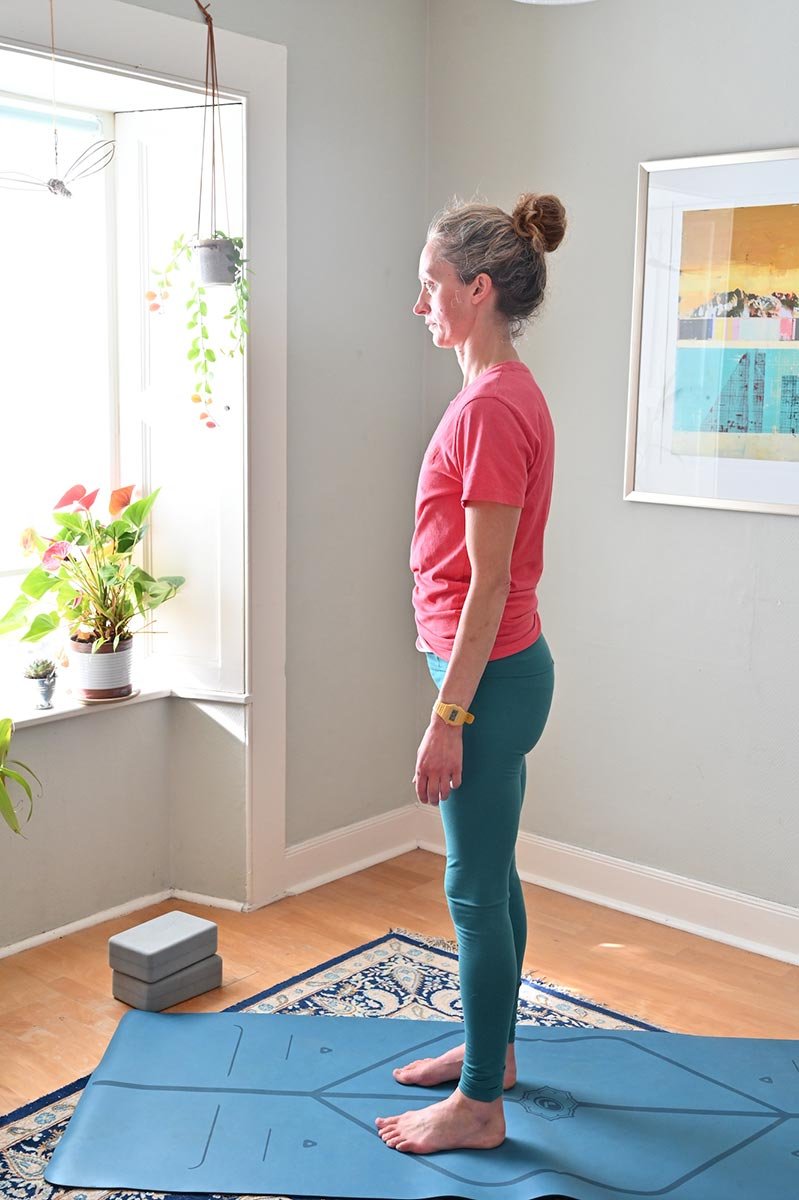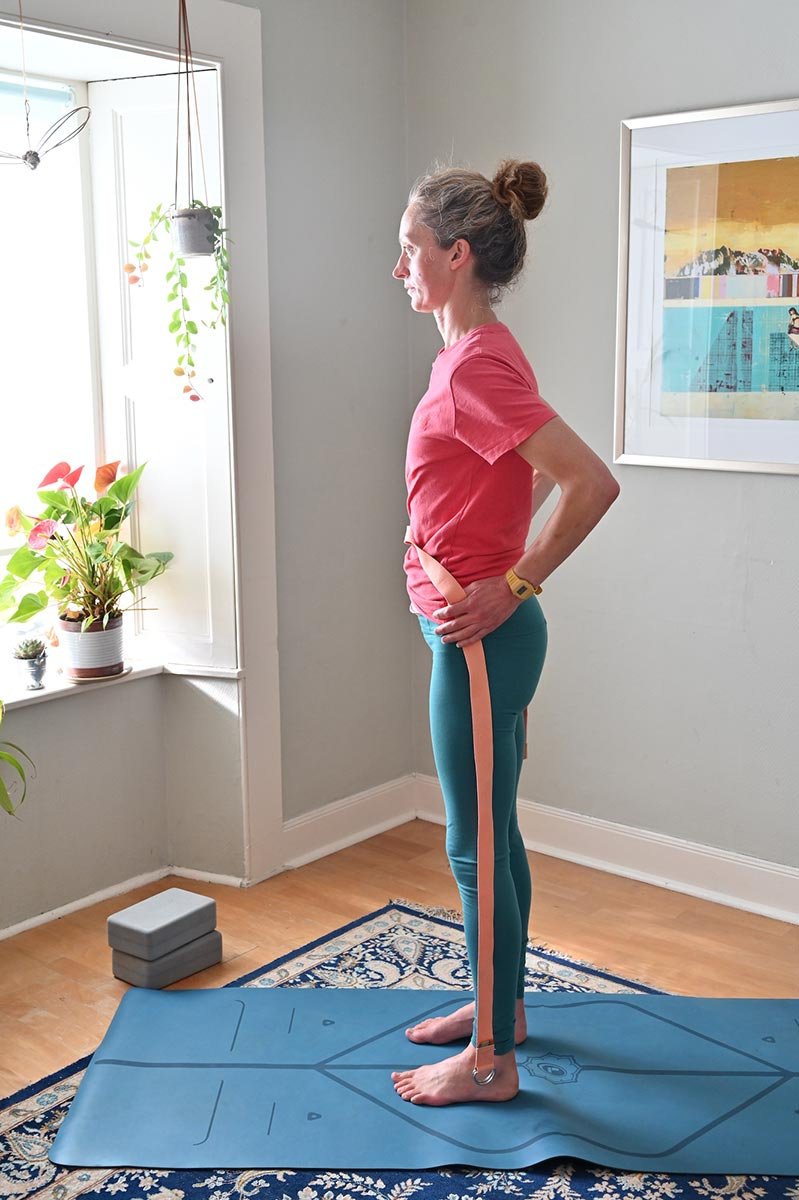The One Move I Give Everyone
When working with anyone, whatever their physical issue is or their goals for movement coaching might be, I take a look at how they stand. It gives me information about their strengths and preferred movement patterns. As well as giving them exercises for homework, I also give them some advice on standing alignment — not because I want them to be in the same position all day — but because we stand a lot and how we stack ourselves determines how different parts of the body are loaded. Perhaps more importantly standing alignment also sets up how we walk and run.
I have a challenge for you today: ‘spot the difference’ between these two photos:
If you don’t see the difference, maybe these help
Apologies that I was not completely profile to the camera, the difference I was hoping you would see is the orientation of my legs. In the first photo in each set, my hips are shifted forwards so that my legs are at a forward lean. In the second photo my hips are stacked so that my leg bones are vertical and you might also notice that my bum has more shape to it. When the hips shift forward a common result is that the bum flattens and the pelvis is driven to tuck under slightly.
I find that almost everyone tends — to varying degrees — have their hips shifted forwards (more like the first photo). At some stage, I teach everyone to “back their hips up”, even a smidge and I encourage them to practise every time they are standing. Why do I think this move is important enough for everyone? I am glad you asked. This simple shift in positioning
Stacks your leg bones vertically underneath you and allows them to fully support your weight thereby improving your stability and balance.
Increases the weight experienced by your leg bones thus giving the appropriate signal to maintain bone density in your hips
Means your meaty heel bone bears more of the mass of you than the smaller bones of the front of the foot. If you have any kind of forefoot pain, this shift can bring immediate relief.
Can help the bony pelvis relax into a more neutral position, meaning that you have more access to pelvis, hip and spinal motion.
Positions your gluteal (bum) muscles on the backside of you where they can best do their job of extending the leg: moving the leg behind you is super important for efficient walking and running. When you shift the hips forward, your gluteal muscles often end up being tucked underneath you a bit, reducing their leverage.
Aligns your pelvic bones and pelvic floor to best support the pelvic and abdominal contents. When your hips are shifted forwards, the pelvis often passively tucks under a bit rotating the pelvic bones backwards. This means the bones take less of the load of your abdominal contents and your pelvic floor experiences more of the load — not great for any pelvic floor issues.
Here is a short video I filmed to illustrate how this stacking helps stability and range of motion in the hips. I had two helpers, one was more useful than the other…
The idea is not to perfect a ‘correct’ alignment and hold yourself there all the time. There is no single ‘right’ way to stand. It is rather that tensions and imbalances in strength mean that many of us always hang out with our hips way forward and this can limit our efficiency and control when we come to move. Being able to train a more vertical leg and neutral pelvis position in standing, when carried over into walking, allows more parts of the hip to participate, as well as allowing your skeleton to better support your movement and your pelvic bones and pelvic floor muscles to better support what sits above it.
Troubleshooting
Backing your hips up seems simple but it can feel very odd when you first try it! Two common experiences are
“I feel like I am going to fall backwards”. My advice here is to make small changes: there is no need to get your leg vertical today, just see if you can back up a cm or half an inch at a time. It takes time to build up the strength on the back of the hip and legs required to feel comfortable with a vertical leg.
“I feel this in my low back” — sometimes getting the leg vertical results in an increased arch in the low back. This can be because of tension in the upper body as well as the front of the hips -an article for another day. One simple tip is to let go of ideas about ‘good’ military-type posture and check you are not lifting the chest bone up towards the ceiling, instead let it relax so it is facing forwards: this should help stack the ribcage over the pelvis and relax the lower back.




